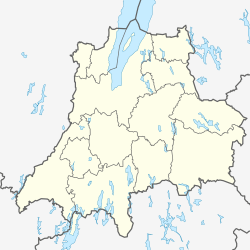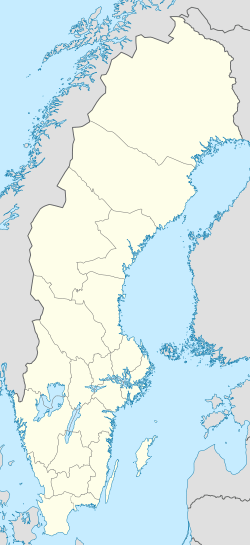Vrigstad facts for kids
Quick facts for kids
Vrigstad
|
|
|---|---|
| Country | Sweden |
| Province | Småland |
| County | Jönköping County |
| Municipality | Sävsjö Municipality |
| Area | |
| • Total | 1.97 km2 (0.76 sq mi) |
| Population
(31 December 2010)
|
|
| • Total | 1,421 |
| • Density | 720/km2 (1,900/sq mi) |
| Time zone | UTC+1 (CET) |
| • Summer (DST) | UTC+2 (CEST) |
Vrigstad is a small town, also known as a "locality," in Sweden. It is located in a beautiful area called Jönköping County. This town is part of Sävsjö Municipality. In 2010, about 1,421 people called Vrigstad home.
Contents
Welcome to Vrigstad!
Vrigstad is a charming locality in the country of Sweden. A "locality" is like a town or a small urban area. It is a place where people live and work. Vrigstad is known for being a peaceful community.
Finding Vrigstad on the Map
Vrigstad is located in the southern part of Sweden. It is specifically found within Jönköping County. This county is one of the many regions that make up Sweden. Vrigstad is also part of a smaller area called Sävsjö Municipality. A municipality is like a local government area. It helps manage services for the people living there.
Vrigstad is also in the historic province of Småland. Provinces are older divisions of Sweden. They often have unique traditions. The town's exact spot on the map is 57 degrees North and 14 degrees East.
People and Size
In 2010, the population of Vrigstad was 1,421 people. This means that over one thousand people lived in the town. The total area of Vrigstad is about 1.97 square kilometers. To help you imagine, that's less than 2 square kilometers. This makes it a relatively small town.
The population density tells us how many people live in each square kilometer. In Vrigstad, there were about 720 people for every square kilometer. This shows it is a fairly close-knit community.
What Time Is It in Vrigstad?
Vrigstad uses Central European Time (CET). This means it is one hour ahead of Coordinated Universal Time (UTC+1). During the summer months, Vrigstad switches to Central European Summer Time (CEST). This makes it two hours ahead of UTC (UTC+2). This change helps people enjoy longer daylight evenings.



